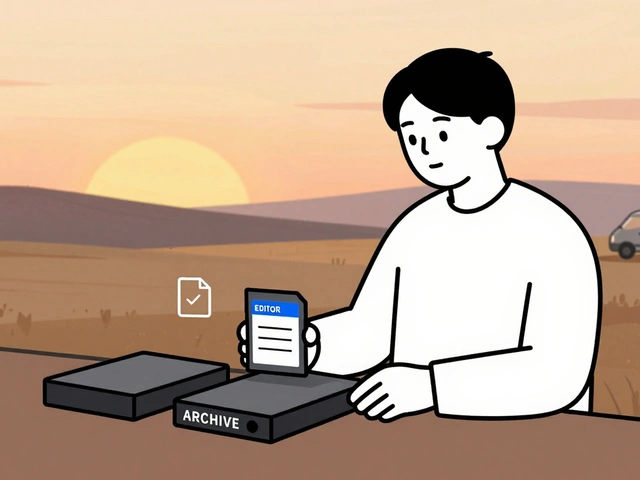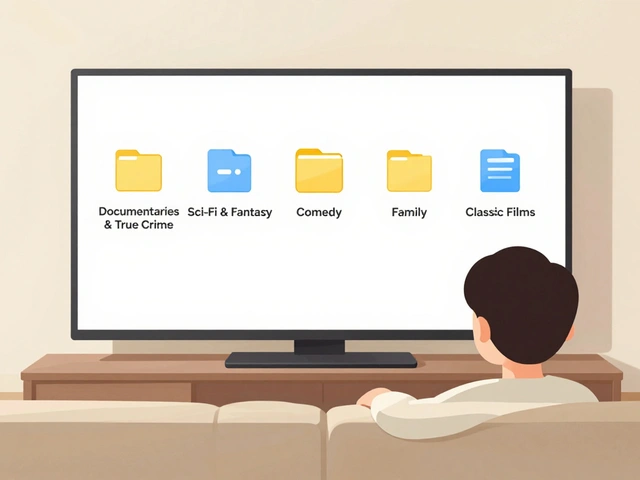3
Do Professionals Really Use Canva? The Truth About Canva for Business and Experts

If you search the question, "Do professionals use Canva?" you'll find some polarizing opinions. Some say it's just for amateurs, high school projects, or anyone avoiding Adobe's steep learning curve. Others argue—sometimes fiercely—that professionals not only use Canva, but rely on it every day. Let’s be real: is it all hype? Or is Canva actually sneaking into boardrooms, agencies, and branding presentations in a big way?
Why Canva Is on Every Pro's Radar
You might be surprised to learn that even at agencies packed with Adobe veterans, Canva has quickly carved out a spot. Why? Speed. Clients want everything yesterday. Canva lets you bang out social media graphics, proposals, or basic brand decks before your coffee gets cold. Ever tried sending a Photoshop file to a client who doesn’t have Adobe? It’s a nightmare. Canva skips all that drama by living in your browser. Upwork’s 2024 job market report even listed Canva among the top five most in-demand digital skill sets. No, it’s not because all those businesses want to look cheap—they want to move fast and keep things simple.
Some people think using Canva makes you less of a "real" designer. But walk into any coworking space here in Brisbane and peek over a designer’s shoulder—you’ll probably see Canva open in at least one of their browser tabs. Big names use it too. Zoom, PayPal, Salesforce—they all have templates on Canva for teams to keep designs on brand. Canva even rolled out special features just for professionals, like "Brand Kits" and advanced team collaboration. It’s no longer just drag-and-drop birthday banners. You can now set up custom color palettes, upload your own fonts, and lock brand elements so nobody messes up your logo.
There’s also something liberating about how Canva bridges the gap between designers and non-designers. Marketers, social media managers, executive assistants—people who speak plain business, not Pantone—they’re suddenly creating good-looking stuff without pinging the design department for every Instagram story. If you’re a designer, this means fewer mind-numbing "Can you just change the font size?" emails, and more time spent on real creative work. Think of it as getting to eat dinner in peace instead of endless snack requests.

Pros, Cons, and When to Skip Canva Entirely
The secret sauce behind Canva’s popularity is its accessibility. Anyone can open it up and get rolling in seconds. Here’s the kicker, though: Canva isn’t for everything. If you need complex photo editing, print-quality color management, or you want a logo that’ll work for a Formula 1 team, stick to Adobe Illustrator or Affinity Designer. Canva’s best when used for what it does well—quick digital graphics, team templates, pitch decks, and social posts. In South Bank, an agency I knew won a client because their proposal deck (built in Canva) looked so clean and matched the client’s colors so perfectly. Turns out the client was using Canva for their own brand guides—instant connection.
Canva’s print support still has limits. If you’re prepping a giant outdoor billboard, you need tight control over every pixel, color profile, and print bleed—don’t expect Canva to handle million-dollar campaigns. But for most marketing teams, especially small businesses, Canva’s print outputs work just fine for flyers, business cards, and merchandise. Canva Print even delivers real-world products to your door in Australia faster than some local print shops.
Let’s talk features. Brand controls are a game-changer. Instead of winging it every time, you upload official fonts, colors, logos, and even set rules so nobody can go wild with Comic Sans. The "Magic Resize" tool means you design once, hit a button, and Canva spits out versions sized perfectly for Instagram, Facebook, or LinkedIn. Batch content? Absolutely possible—and a real lifesaver for anyone managing more than one brand. Canva also integrates with apps like Slack, Google Drive, HubSpot, and DropBox, so assets get shared fast and stay in sync.
But here’s what trips up some pros: time-saving templates can lead to sameness. The more people lean on default layouts, the easier it is for their graphics to scream “I was made in Canva.” If you’re working for a hip boutique or creative brand, you’ll want to customize beyond the basics. Some graphic designers build elements in Illustrator, export them, and then drag them into Canva to combine the best of both worlds. It’s that hybrid workflow that keeps your designs fresh and avoids the “cookie cutter” aesthetic.
One danger is asset ownership. Canva Pro lets you buy stock images, but watch the rights closely. You can’t trademark a logo made entirely from public Canva elements—that’s the trade-off for such easy access. When a project calls for one-of-a-kind art or trademark-safe branding, ditch Canva and go full bespoke.

Tips, Real-World Stories, and The Future of Canva in Professional Design
Tip number one every pro should know: version control. Canva does auto-save, but heavy team use can turn projects into a tangled mess of duplicates. Have naming conventions—"ClientName_Proposal_2025_v1" beats "FinalFINALuseThisOne" every time. Canva for Teams even lets you set access levels and approve changes before they go live, so nobody messes up the CEO’s big pitch deck accidentally.
Another tip: use Canva’s "Brand Kit" for everything—logos, custom fonts, HEX codes. It keeps everyone on the same page, especially as teams grow and remote work becomes the norm. Automation is quietly becoming a thing too. You can pull data from Google Sheets or plug into Zapier to auto-generate graphics or reports, saving hours every week.
In the real world, hybrid workflows are winning. Take Nathan, a freelance brand designer in West End, Brisbane. He sketches logo concepts in Procreate on his iPad, vectors them in Illustrator, and then uses Canva to set up social templates and hand them over to his clients. He even trains them on “how not to break the brand.” This gives clients freedom but keeps his creative vision intact. Or consider Rachel, a marketing director who uses Canva for rapid-fire campaign testing. She puts out three or four ad variants in under an hour, watches which get the most bites, and then sends winning ideas back to her designer for polish in Photoshop.
One overlooked Canva feature: "Magic Write." It drafts copy ideas using AI, which might sound scary, but it jumpstarts brainstorming. You can hit “replace” a hundred times, but sometimes that first spark is what you need. And if Canva’s asset library isn’t enough, plug in your own designs, illustrations, or imagery. They even support SVG uploads now—game-changer for anyone designing scalable graphics.
It’s worth mentioning: universities, non-profits, and local councils in Australia jumped on Canva early because of its simple learning curve and pricing. They pull in volunteers and interns who don’t want to spend six months learning InDesign just to run a newsletter. Now, heaps of those users are landing agency gigs and bringing Canva knowledge with them—it’s becoming a basic expectation, right up there with knowing Word or Google Docs.
Will Canva replace heavyweight tools? Not likely, but that’s not the point. For quick jobs, repeatable templates, and team workflows, Canva is hard to beat. It frees pros from grunt work and gives smaller outfits pro-quality output with way less effort. At the same time, it’s good to stay sharp with traditional design skills and jump into the big guns when it counts. Think of Canva and tools like Adobe as partners, not rivals. If you’re working in a fast-moving industry, Canva is already shaping how the pros get things done—even if you wish you could always bill more hours designing everything from scratch.
So, do professionals use Canva? They do. It’s not the only tool in their kit, but it’s there—and sometimes, it’s the one they reach for most. If you’re running a business or building a creative career in 2025, you’ll want Canva in your arsenal. Just don’t forget to add your own twist so your work always stands out from the crowd.









Bob Buthune
July 18, 2025 AT 00:04Wow, this article really hits on a question I've been pondering for a while now. I mean, Canva is soooo accessible and offers a lot for newbie designers, but the idea that pros rely on it almost feels like a controversial take, doesn't it? From my experience, many professionals use Canva for quick mockups or social media posts where time is tight and the brief calls for something simple yet elegant.
But when it comes to complex branding projects or things that require a nuanced touch, the heavy-hitters like Adobe Illustrator or Photoshop seem unbeatable. However, I think the article does a good job showing that experts sometimes integrate Canva into their workflow, balancing speed and sophistication. It’s like getting the best of both worlds.
Plus, the inclusion of real-world stories from designers mixing Canva with heavyweight software was super insightful, and honestly, it was reassuring. It's a toolbox, right? Use the tool that fits the need. This kind of practical viewpoint is refreshing because it acknowledges the myths but also respects Canva's place in the pro space.
Would love to hear if anyone here has used Canva for something really high-stakes or unusual – does it truly hold up or is it mostly just a convenient crutch? 😕
Kayla Ellsworth
July 19, 2025 AT 03:51Ugh, the mere idea that 'pros' actually use Canva makes me roll my eyes ridiculously hard. Like, sure, anyone can slap together some graphics there, but does that really mean it’s professional-grade? I think this whole 'Canva for experts' angle is just another marketing gimmick capitalism loves — pretending DIY tools can replace the nuanced, time-consuming art of graphic design.
It’s like when fast food chains claim they serve gourmet burgers. Sorry, but watching a few templates doesn’t make someone a seasoned artist. The article sounds convincing, but it’s honestly preaching to the choir of people who want easy answers rather than mastering actual craft.
Canva’s great for lazy Tuesday morning posts or whatever, but please don’t confuse convenience with creativity. Most experts still step back to their big guns for anything valuable or complex. Just my two cents, but I’m skeptical beyond belief.
Soham Dhruv
July 20, 2025 AT 07:37Hey everyone, really cool discussion here. I’ve been in the design community for a bit, and I actually see Canva as one of those tools that fits a specific niche rather than replacing traditional design apps. It’s kind of like a bridge for beginners and a time-saver for pros working on simple assets.
Sometimes, clients want quick turnarounds for social media graphics or event flyers, and that’s where Canva shines. But yeah, when it’s about complex vector work or intricate branding, Adobe suite or Sketch is usually the way to go.
I also appreciate how the article points out that many pros mix Canva with heavyweight software — a hybrid workflow that balances efficiency and quality. It’s inclusive of different skill levels and project needs. So let's not be too quick to dismiss it outright.
Ian Maggs
July 21, 2025 AT 11:24This topic is endlessly fascinating, is it not? What does it truly mean to be a 'professional'? If professionalism is measured by the tools one employs, then does the choice of Canva signify a lesser craft? I suspect that the answer lies much deeper — in intent, creativity, and context.
Canva might be viewed as the philosopher’s stone for some, transforming limited time into usable designs. Yet, for others, it remains a mere shadow of artisanry, lacking the depth bestowed by traditional graphic design software.
Perhaps it is not the software but the vision behind the hand that matters. Every tool is but an extension of the creative soul. This article, with its stories of blending technologies, illustrates a postmodern acceptance that the boundaries between so-called 'professional' and 'non-professional' tools blur.
Food for thought indeed.
Michael Gradwell
July 22, 2025 AT 15:11Honestly, I don’t buy the hype about Canva being a serious tool for professionals. It’s fine for quick jobs, sure, but anyone with a shred of skill knows that true quality and control come from traditional software.
What bothers me is the dilution of graphic design expertise this promotes. When people hear pros use Canva, they think there’s no real skill involved, which couldn't be further from the truth.
Sure, speed matters in business, but if you want something that stands out, you don’t settle for a template-driven platform. Real pros invest time in their craft, and that means mastering complex software.
Flannery Smail
July 23, 2025 AT 18:57Look, I get that Canva's user-friendly but it’s still not the ultimate 'pro' tool. I've seen plenty of designers who just don’t want to wrestle with Adobe’s guts, so they lean on Canva instead. That's cool, but it’s probably more about laziness than excellence in some cases.
No bashing intended, just saying it’s not for everyone or all projects. Sometimes simplicity is all that’s needed — other times, you need the full arsenal.
This article seems to want to paint Canva as universally useful for professionals but that feels like a stretch.
Emmanuel Sadi
July 24, 2025 AT 22:44Ha! Professionals using Canva? That's a laugh and a half. You know I’ve seen folks passing off Canva-created stuff as 'design work' and calling it a day — sometimes you just gotta shake your head.
Don’t get me wrong, Canva is handy for some quick jobs, but the idea that it holds a candle to pro-grade work is a stretch bordering on delusion. I've seen projects go downhill fast because the 'designer' was relying too much on Canva’s limited features.
In reality, expert design requires mastery of layers, vector manipulation, and precise control — none of that happens in Canva.
Keep your eyes open, folks.
Wilda Mcgee
July 26, 2025 AT 02:31Oh, I love this take and what the article offers! Canva is such a vibrant tool that, when combined with traditional software, can actually empower creators. Rather than thinking of it as 'less than' professional software, I see it as complementary.
Especially for small businesses or freelancers, Canva can be a game changer — helping people create beautiful, colorful, and impactful visuals without diving deep into complicated software. It lowers the barrier to entry and sparks creativity.
Of course, it’s not a panacea for every design challenge, but that’s okay. The real strength is knowing when to mix tools and workflows.
This article does a great job highlighting those real-life stories, and I think it’s a breath of fresh air in the design community.
Chris Atkins
July 27, 2025 AT 06:17From what I’ve seen working with different cultures and industries, Canva is definitely more than a simple template maker. It opens doors for collaboration especially in environments where not everyone speaks design fluently.
In many cases, Canva helps bridge gaps—letting teams quickly draft ideas and visuals to share across departments without yearning for graphic design degrees.
But yeah, for final polished work, professional software rules. It’s about knowing the limits and using tools accordingly. No one tool fits all.
Jen Becker
July 28, 2025 AT 10:04Eh, I’m kinda on the fence here. This whole Canva-for-pros thing feels like one big drama. On one side, you have people raving about it, making it seem like a magic wand that instantly makes anyone a designer.
On the flip, there’s the purists who’d laugh it off as a kiddie toy. Honestly, I see it as a bit of both—depending on who’s behind the keyboard.
I've used Canva for quick projects and yes, it works. But I’d never trust it for serious branding or something that needs that wow factor. It’s more about convenience and not always quality.
So, maybe the truth lies somewhere in between. This article pokes that middle ground nicely.